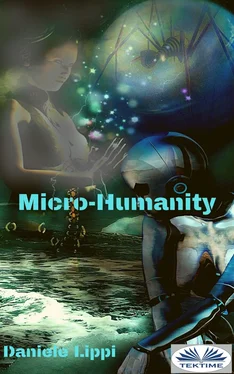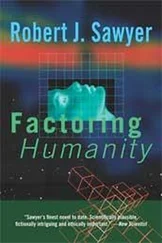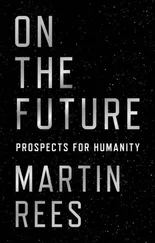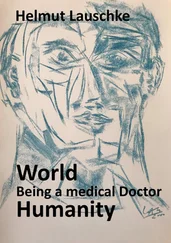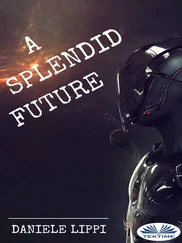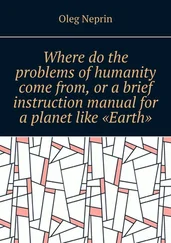Micro-humanity
DANIELE LIPPI
Translated by
ANNA CRO
Copyright © 2020 Daniele Lippi
All rights reserved.
All materials and translations are protected by copyright. No part of this book may be used, reproduced, or disseminated in any medium without the author’s written permission.
The story narrated in this book is the result of the author’s imagination. It is therefore not autobiographical. Any reference to names, things, people who exist or existed, or to facts that really happened is purely accidental.
To my parents and my family.
Look at the small things because one day you’ll turn back and you’ll understand they were big.
Jim Morrison
Small things are responsible for big changes.
Paulo Coelho.
TABLE OF CONTENTS
|
Acknowledgements |
|
| 1 |
WHY IT HAPPENED |
1 |
| 2 |
HOW IT HAPPENED |
5 |
| 3 |
SURPRISE |
11 |
| 4 |
THE PRESENT |
18 |
| 5 |
ASSAULT |
25 |
| 6 |
SHELTER |
36 |
| 7 |
GETAWAY |
48 |
| 8 |
NEVERLAND |
68 |
| 9 |
EPIPHANIES |
93 |
| 10 |
A NEW BEGINNING? |
110 |
Many thanks to you, who are reading these words.
For further information:
https://io-daniele.wixsite.com/daniele-lippi
CHAPTER 1 – WHY IT HAPPENED
Year 2323.
The year when everything changed.
The year of awareness.
The year of the great decision.
The year when — perhaps for the first time since modern man existed — the whole of humankind agreed on what to do, and not only in principle but in fact as well.
The year of no return.
The year of rebirth.
The year of a new era not only for us but for earth itself and its inhabitants.
A decision dictated neither by altruism nor by some dazzling general epiphany but, rather — in a much simpler way — linked to a series of failures with which the whole human race had finally been forced to deal.
At the beginning of the millennium, everything had seemed possible: space travels, colonies on other planets, teleportation, robots featuring almost human intelligence, and more, much more. Those were the years when all branches of science made great leaps forward. Years that rightly portended a bright future. There were some challenges, of course, but nothing unbeatable.
However, reality was that humankind had to face many more obstacles than expected. Space travels became more frequent, comfortable, and technological but not faster, at least not significantly, not enough to go beyond Mars in a reasonable amount of time. Not fast enough to develop colonies.
Colonies, indeed, proved to be too expensive, unsafe, and failed to develop self-sufficiency. Not for a large number of people, at least, not on Mars, much less on the Moon, which needed constant supplies from the Earth.
Hibernation technique — or cryostats — had not succeeded in delivering the desired results yet and was still too risky.
The idea of space colonies orbiting around Earth had to be dismissed after having realized that our body was made neither for space and weightlessness nor for artificial gravity in the long run.
It was as if both our human nature and Earth with its available resources were firmly opposing to human expansion in space with all their might.
At the same time, however, Earth seemed unable to support the nearly twenty billions human beings trampling on it. An exorbitant and constantly increasing number both due to failure of birth control policies and to medical progress, which had dramatically increased life expectancy and allowed a part of the world population to peacefully surpass 120 years of age.
Among all the hopes of the beginning of the millennium one had actually come true in addition to the medical one: robots — even if their intelligence did not even come close to the human one yet despite techno-biological progress. It was only thanks to them that humankind survived. They tirelessly produced enough food for everyone, cleaned and improved air, helped the elderly, took care of the sick and of the children, carried out the most unpleasant but necessary tasks, recycled — in short, they allowed humankind to concentrate on what was considered truly important.
Nevertheless, despite their diffusion and technical and aesthetic development, robots could not learn like a child, think like a man, and develop emotions yet, thus they could not really aspire to arise to the status of a fully sentient creature with its own personality and cognitive peculiarities. They could simulate this very well, yes, and many went on debating — in an endless discussion — about how our brain could actually be compared to nothing more than a very efficient computer. Such people were always in contrast with those who claimed that, on the other hand, an artificial thing was always going to be artificial and that it had nothing to do with the birth, evolution, and development typical of life. Moreover, despite everything robots knew or could show, they were actually never going to emancipate themselves from the source code by which they had been programmed, without saying that a machine, by definition, could be tampered with. Of course, the answer was that also humans have their source code as well — called DNA — and that history showed over and over again how many times people had been subdued, subjugated, deceived, and persuaded by madmen in different eras. Then came the inevitable free will, the imprinting, and finally the concepts on which the debate ran aground: the ability to spontaneously imagine, to daydream, and the capability to have faith.
The fact was that humankind was standing on the brink of the abyss in that fateful 2323 and for the first time everyone — indeed everyone — realized that something was to be done. Population was too large. The space too little. Food was insufficient. Drinking water was in short supply. The terrestrial ecosystem was about to raise the white flag.
Everyone agreed. Something was to be done. Although humankind seemed united for the first time, the problem was that no one was able to propose an adequate solution to the problem.
Thus, all the brightest and most renowned scientists and all the living Nobel laureates gathered in the most advanced research center ever built and located in the center of Sardinia in order to ensure privacy, solitude, and security.
CHAPTER 2 – HOW IT HAPPENED
Such minds — the brightest minds of the time — studied, experimented, hypothesized, discussed for more than three years without coming to a solution and the more time passed, the more the alliance of the world’s nations got strained, a victim of panic and selfishness.
When the fifth year of research was hit and an enormous amount of money had been spent, not only results could not be seen yet, but the scientists themselves began to give up and, one after the other, abandoned the project because of stress and pressure.
It was in that year, in perhaps the darkest moment, when everything seemed doomed to fail, that an unknown scientist — employed by a multinational transport company — sent his idea and project together with a simple sentence: “We need more space, but Earth is the only place we can dispose of and, if we take up too much space then, why don’t we just try to take up less space?”
The unknown scientist was summoned to explain his idea. He showed up before the brightest minds in the world with a simple yet effective molecular modulator, on which he had been working for years in order to reduce packages, containers and their contents so that it was possible to transport more of them in one go.
Читать дальше
